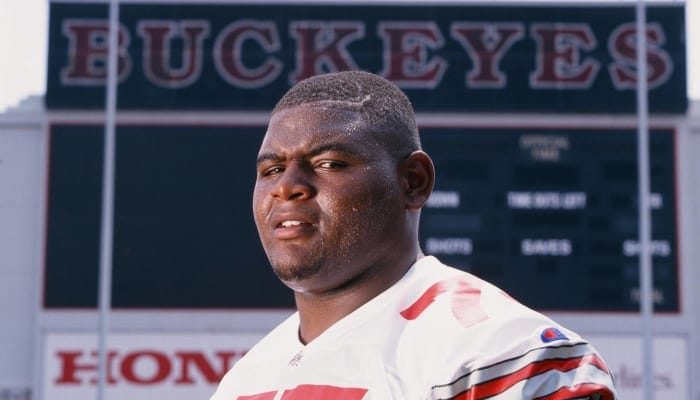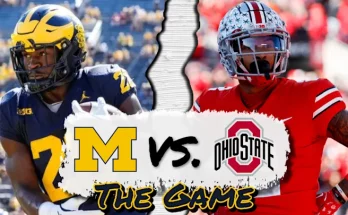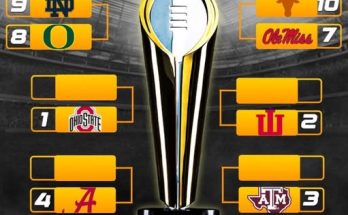From Ohio State legend to NFL immortal, Orlando Pace’s football journey is one that transcends the usual accolades and career highlights, becoming a story of dominance, innovation, and consistency at one of the most underappreciated positions in sports: offensive line. He was more than just a player; he was a standard-bearer, a prototype of what an offensive tackle should be, and in many ways, the face of an era where protection and power in the trenches became as celebrated as the highlight-reel plays of quarterbacks and wide receivers. Cemented as a seven-time Pro Bowler, a Super Bowl champion, and a member of both the College Football and Pro Football Hall of Fame, Pace’s legacy as the greatest offensive lineman in football history rests on his unique blend of size, strength, agility, and football intelligence that few, if any, could replicate.
Pace’s story begins in Sandusky, Ohio, a small town where football became more than a pastime—it was a proving ground. Even in high school, his massive frame and natural coordination made him stand out. Coaches and scouts quickly realized he had the makings of something special, someone who could completely redefine what it meant to protect the quarterback’s blind side. His high school dominance opened the door to Ohio State, where he would etch his name in college football lore as arguably the most dominant offensive lineman in NCAA history.
At Ohio State, Pace became synonymous with dominance. He redefined the left tackle position by not only stonewalling defenders but also making it look easy, something almost unnatural given the caliber of athletes lined up across from him. He was a two-time unanimous All-American, won the Lombardi Award twice as the nation’s best lineman, and claimed the Outland Trophy, solidifying his reign as the best offensive lineman in the country. In a sport where statistics drive recognition, offensive linemen often go unnoticed, but Pace was so overwhelming that he forced the spotlight onto himself. His technique was flawless—quick feet that allowed him to mirror speed rushers, overwhelming strength to neutralize power moves, and an uncanny awareness that ensured his quarterback remained upright. This dominance culminated in his famous “Pancake Block” tradition at Ohio State, where coaches began tracking the number of defenders Pace drove into the turf. The Buckeyes’ media team even began handing out pancake magnets after games, a quirky but telling sign of how unstoppable Pace was at the collegiate level.
When the 1997 NFL Draft arrived, there was no doubt who would be the top pick. The St. Louis Rams made Pace the No. 1 overall selection, a rare honor for an offensive lineman in a league that usually prioritizes quarterbacks, running backs, or pass rushers. That pick signified more than just belief in Pace’s ability—it symbolized a recognition that the game was evolving, and protecting the quarterback’s blind side had become perhaps the most critical task in football. The Rams traded up to secure him, understanding that he could anchor their offensive line for the next decade and give their franchise stability at one of the most valuable positions on the field.
What followed in St. Louis was nothing short of extraordinary. Pace immediately became the cornerstone of the Rams’ offensive line and the anchor of what would soon be dubbed “The Greatest Show on Turf.” With Kurt Warner at quarterback, Marshall Faulk in the backfield, and electrifying wide receivers like Isaac Bruce and Torry Holt stretching defenses, the Rams’ offense became legendary. Yet, behind all the fireworks was Pace, quietly dominating in the trenches, ensuring Warner had time to throw and Faulk had running lanes to exploit. The Rams’ offensive explosion was built on Pace’s ability to neutralize elite pass rushers week after week, a foundation that allowed the team to flourish into one of the most dangerous offenses in NFL history.
Pace’s contributions culminated in the Rams’ 1999 Super Bowl championship, where his protection was instrumental in Warner’s MVP performance and the team’s victory over the Tennessee Titans. While Warner and Faulk garnered headlines, teammates and coaches consistently emphasized that none of it would have been possible without Pace’s consistency at left tackle. For nearly a decade, he was the immovable object who never let the opponent’s best pass rusher dictate the game.
The accolades came pouring in throughout his career: seven Pro Bowl selections, three First-Team All-Pro honors, and eventual induction into both the College Football Hall of Fame and the Pro Football Hall of Fame. Yet, numbers and awards still fail to capture the essence of Orlando Pace’s greatness. His impact was felt in how he changed the game. He became the prototype that NFL scouts sought for generations—a massive, athletic, intelligent left tackle who could thrive against both speed and power. In many ways, his play helped elevate the value of the position, leading to an era where left tackles became some of the highest-paid and most coveted players in the league.
What made Pace unique was not just his physical gifts but also his football IQ and consistency. Standing 6’7” and weighing over 320 pounds, he moved with the fluidity of a tight end and had the power of a defensive lineman. His footwork was nearly flawless, a product of both natural ability and relentless preparation. He studied defenders, recognized tendencies, and always seemed a step ahead. While defensive players often thrive on unpredictability, Pace neutralized that chaos with discipline and control, dictating the matchup rather than reacting to it.
Teammates often described him as the quiet leader, someone who didn’t need to boast or draw attention but instead led by example. His presence gave quarterbacks confidence and running backs security, knowing that the left side was protected by the best in the business. Coaches trusted him to handle the league’s elite pass rushers without assistance, allowing them to focus on other parts of the game plan. That level of trust is perhaps the highest compliment an offensive lineman can receive.
Even as injuries mounted later in his career, Pace’s body of work was undeniable. He had already cemented his legacy by transforming the Rams’ offense and reshaping the way the NFL valued offensive linemen. His Hall of Fame induction in 2016 was less of a debate and more of a coronation, an acknowledgment of a career that stood head and shoulders above most in football history. He joined an exclusive fraternity not only as one of the greatest Rams of all time but as the gold standard at his position across the sport.
What separates Pace from other great offensive linemen is the totality of his career across both college and professional levels. Few players have been as dominant at every stage, and fewer still have redefined expectations at their position. At Ohio State, he became a legend who set a standard that linemen still chase decades later. In the NFL, he became the cornerstone of a championship team, a player who elevated those around him by giving them the security and time to execute. He bridged eras of football, from the traditional ground-and-pound style to the high-flying offensive fireworks of the modern game, proving that no matter how the sport evolved, dominance in the trenches remained non-negotiable.
When conversations about the greatest offensive lineman in football history arise, names like Anthony Muñoz, Jonathan Ogden, and Walter Jones often come up. Each was extraordinary in their own right, but Orlando Pace’s case rests not only on his accolades but also on his role as a pioneer. Being drafted No. 1 overall as an offensive tackle, dominating from day one, serving as the bedrock of a Super Bowl-winning team, and earning the respect of opponents and teammates alike all combine to place him atop the list. His influence also continues beyond his playing days, as his career helped elevate the recognition and financial value of offensive linemen, paving the way for future stars to be celebrated and compensated for their impact.
The legacy of Orlando Pace is one that will endure for as long as football is played. He was the rare offensive lineman whose greatness transcended the anonymity of the position, forcing fans, analysts, and even casual viewers to acknowledge the brilliance of a player who didn’t score touchdowns or make highlight-reel interceptions but instead ensured those moments could happen in the first place. He embodied the idea that football is won in the trenches, that true greatness is about enabling others to shine while standing as a fortress against the chaos of the game.
From his humble beginnings in Sandusky to his dominance at Ohio State and his immortality in the NFL, Pace’s story is one of fulfillment and inevitability. He was destined to change the game, and he did. As a seven-time Pro Bowler, a Super Bowl champion, and a Hall of Famer, Orlando Pace isn’t just remembered as one of the best. He is remembered as the best, the greatest offensive lineman in football history, a man whose impact can still be felt every time a quarterback drops back with confidence, knowing that someone like Pace has paved the way for what offensive linemen are supposed to be. His name belongs not only in the halls of football history but also at the very top of the list of players who redefined what true greatness looks like in the sport.



